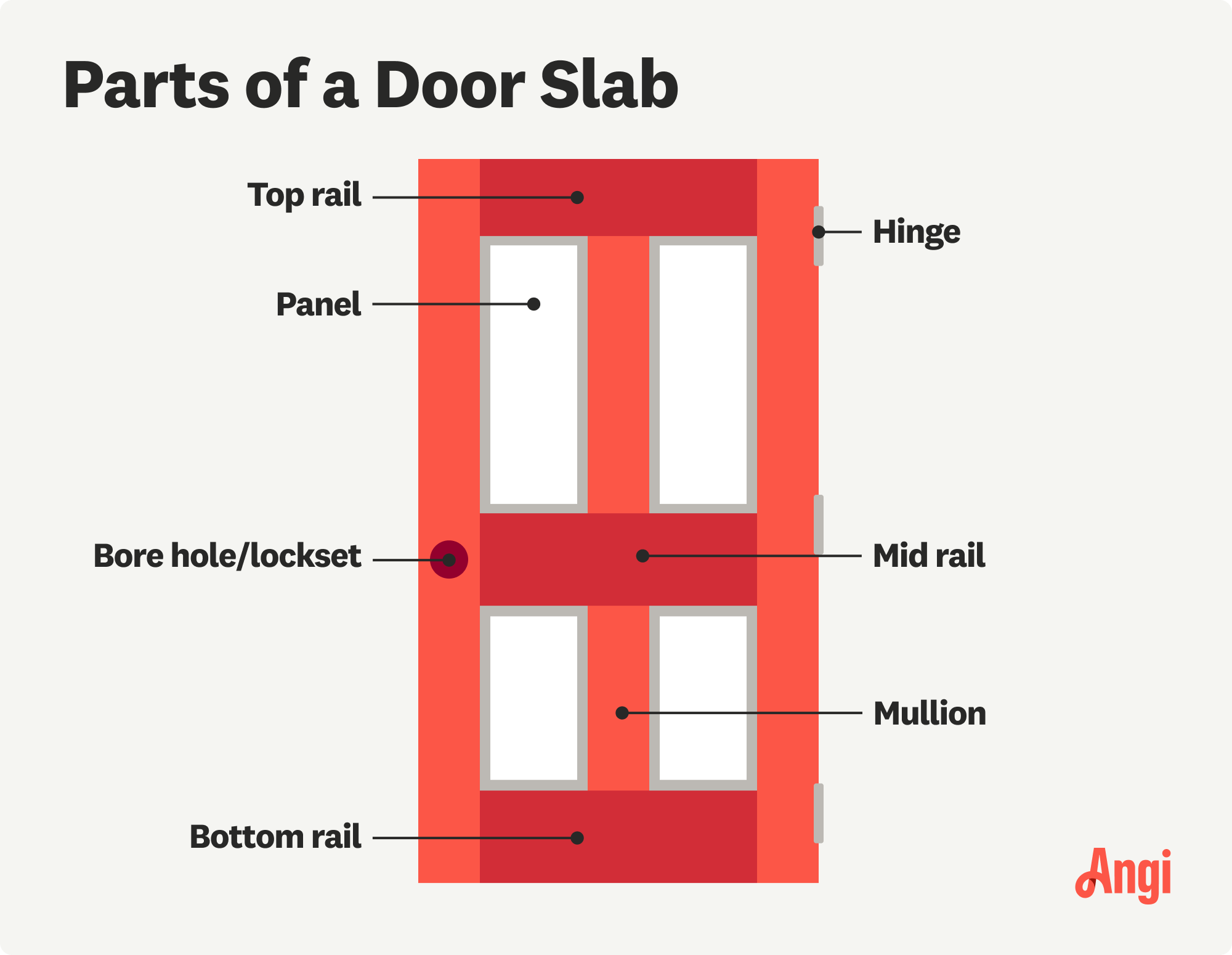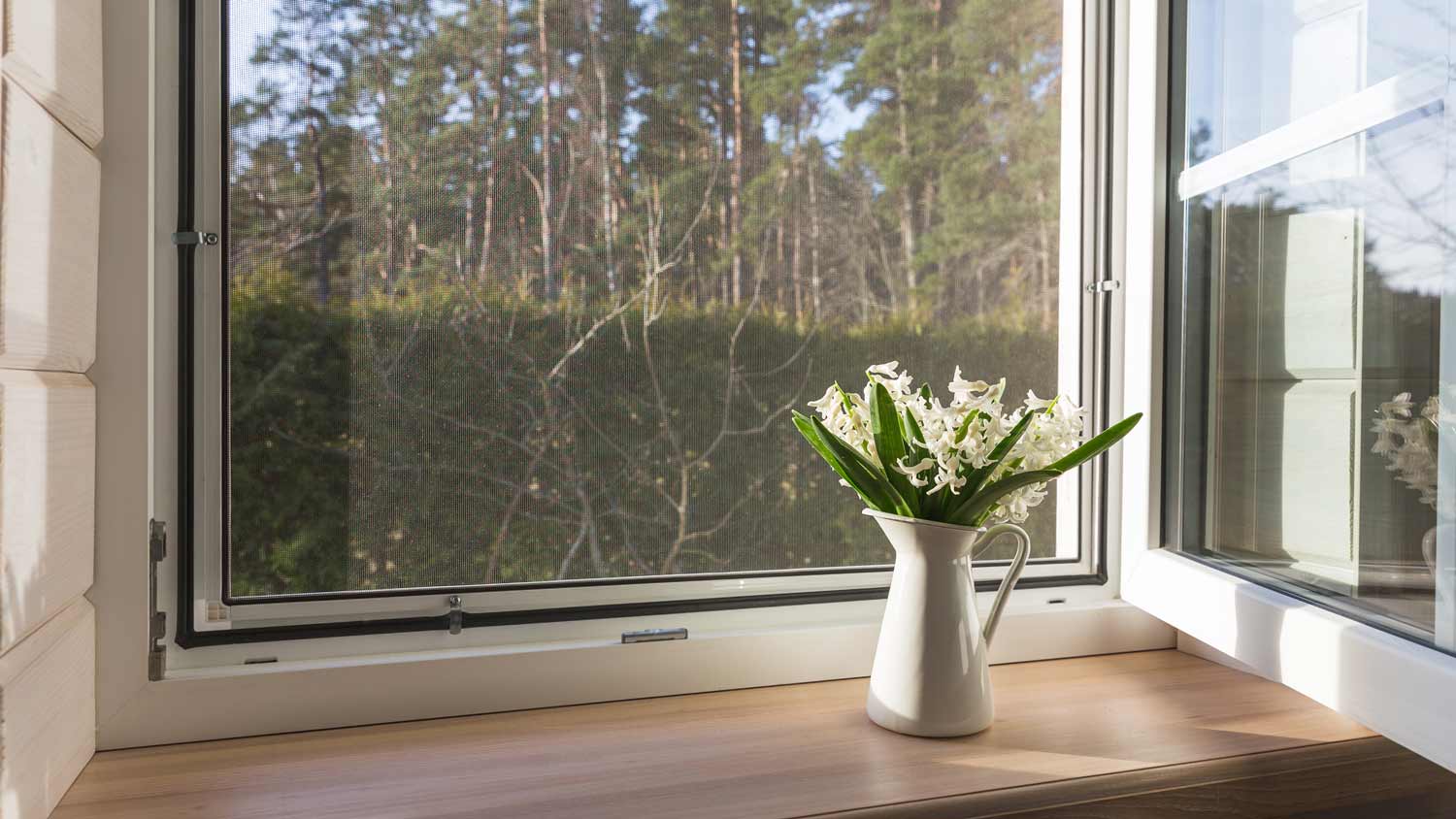What Is a Mullion on a Door? Types, Pros and Cons, and What They’re For
Even doors need a little structure—and mullions are here to hold it all together


Mullions are doorframe parts that separate and support the different sections of a door.
In addition to adding structure, these parts can also be decorative and provide security.
There are four mullion types: fixed, removable, glass, and reinforced.
When choosing door mullions, consider pros, like design elements, and cons, like limited door opening sizes.
Unlock the key to stylish, functional doors by exploring mullions. They’re parts of the doorframe that separate and support sections of the door. Behind every standout door is a mullion doing the heavy lifting. Here, we dive into what a mullion on a door is, the types of mullions, what they do, and their pros and cons.
What Is a Mullion on a Door?

Mullions are vertical or horizontal dividers between panels of glass or different sections in doors, windows, and other architectural features of homes. They can be structural, decorative, or both, depending on the door type and design. They can also create dividing points between two doors in double-door setups.
Unlike muntins, which are small, decorative grid-like dividers that separate individual panes of glass, mullions are larger dividers that separate large sections or panels.
Types of Door Mullions

Not all door mullions are the same. In fact, each type serves a specific purpose, depending on the door’s function, aesthetic requirements, and location. Your door installer can help you choose the best mullions for your door design.
Fixed Mullions
Fixed mullions are permanent parts of doorframes. Most run vertically and separate door leaves (the main panel that swings open and closed) or sections of glass. They provide structural support and are integrated into the structural design of the door. You’ll see them in double doors that need a permanent division between the two doors, doors with multiple glass panels like French doors, and commercial doors that need more strength and stability.
Removable Mullions
Removable mullions are temporary dividers that detach from the doorframe to create a flexible opening size. They’re often part of double-door setups that allow for wider access and the movement of large items through doorways. You’ll find them in commercial buildings, schools, hospitals, and other buildings that occasionally need larger openings for moving equipment or furniture.
Glass Mullions
In glass doors, mullions are built between glass panes or layered over glass panels for decorative and functional reasons. These mullions are often thinner and integrated into the door design, allowing them to divide sections of glass without blocking the view. They’re common in glass panel doors like patio doors and French doors because they add stability without blocking light. They’re also popular in modern architecture, commercial storefronts, and office spaces that need structural divisions without loss of visibility.
Reinforced Mullions
In settings that need more security or strength, like commercial settings and security doors, you’ll see reinforced mullions between door sections or panels. These mullions are made of steel or aluminum that can handle heavy loads, lend structural stability, and resist impact and forced entry. They’re also common on emergency exits and fire-rated doors because they often meet specific building code requirements for safety and security.
What Door Mullions Do
Depending on the type of door and how it’s being used, door mullions serve one or more functions:
Support: Structural door mullions distribute weight evenly and stabilize the door assembly. They reinforce the framework of the door, especially in large or double doors.
Separation: Mullions separate glass panels or door leaves, creating visual separation. Mullions also help doors function better by dividing them into smaller sections, helping prevent warping or sagging over time.
Security: Whether removable or fixed, mullions improve security by reinforcing a rigid frame for door locking systems, especially in commercial doors and doors in high-traffic areas.
Aesthetics: Mullions add visual interest to door designs. They allow manufacturers to build in patterns, glass panels, and other decorative features. For example, many French doors or sliding glass doors feature mullions that are pleasing to the eye and create a custom look.
Pros and Cons of Door Mullions
Whether structural or for looks, mullions on doors are there for a reason. Here’s a look at the upsides and downsides of this door part.
| Pros | Cons |
|---|---|
| Adds structural integrity | Limit opening sizes |
| More area for locks and hardware | Can require maintenance and repair |
| Lend a design element to doors | May look busy |
| Removable mullions create versatile door opening sizes | Can block the line of sight through glass doors |
Pros
Mullions strengthen doors and make them more rigid. This is especially helpful for larger doors, double doors, and doors that receive heavy use.
They add room for different types of door locks and hardware for added security
Mullions can create a traditional or modern look when used as a design element, like those seen with French and glass doors.
Removable mullions give users the option to create larger door openings when needed, especially in commercial, educational, health care, and industrial settings.
Cons
Removable mullions can wear out or fall out of alignment over time. They’ll need repair or maintenance from a local door repair contractor, which can add to the door's cost.
Fixed mullions can reduce the size of the door opening.
For lovers of minimalism, mullions can interrupt the visual flow and obstruct the view through glass doors.





- What’s the Difference Between Mullions and Muntins?
- 5 Ways To Make Your Front Door Energy Efficient
- 4 Types of Storm Doors and How to Choose the Best One
- Do I Need a Storm Door? What to Consider
- 8 Tips for Stylishly Updating Interior Doors
- How to Insulate a Door
- Exploring the Different Parts of a Storm Door and Their Functions
- Why Water is Leaking Through Your Sliding Glass Door and How to Stop It
- Fiberglass vs. Wood Door: Which Is Best for Your Home?
- Center-Hinged Patio Door vs. French Door: What’s the Difference?










